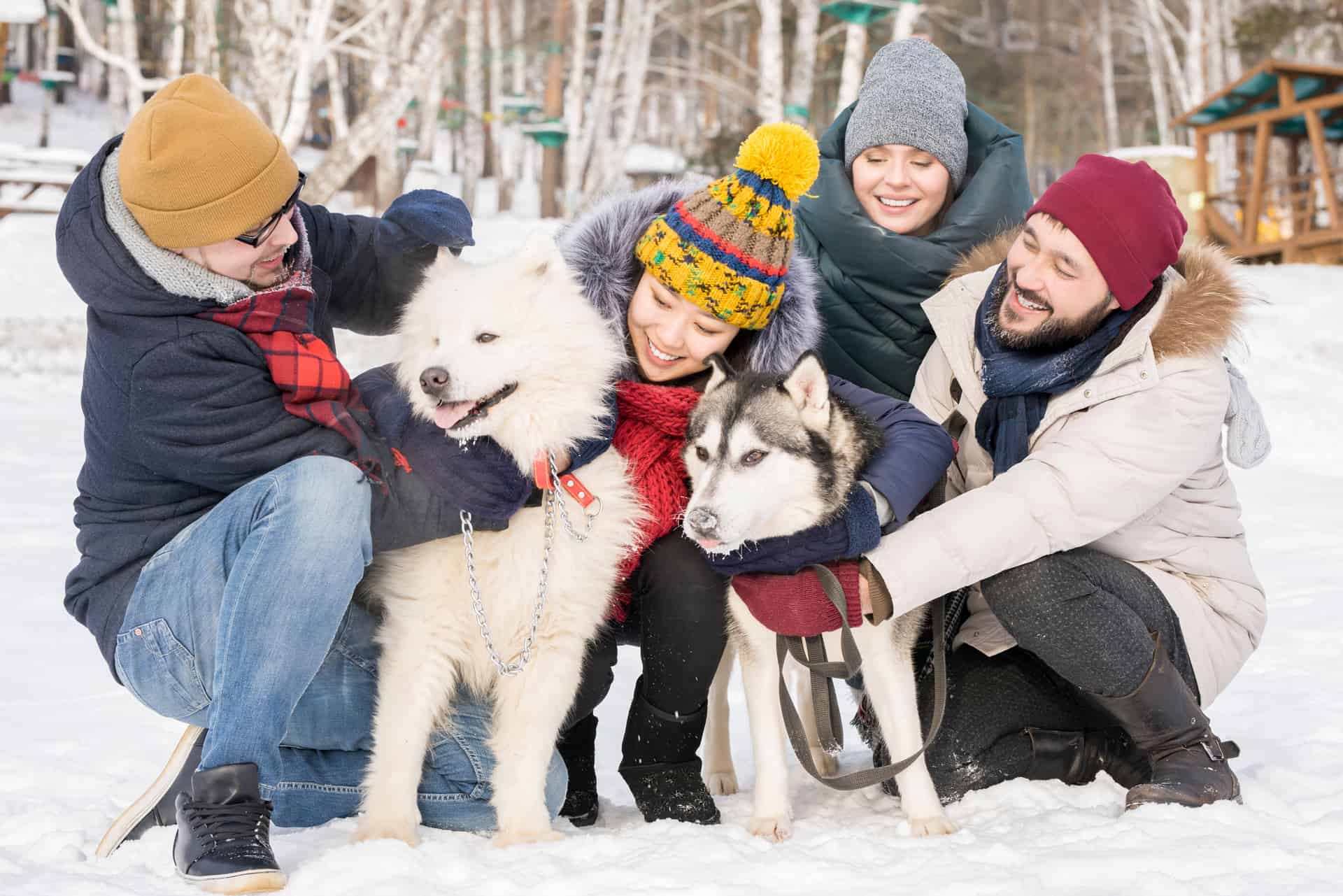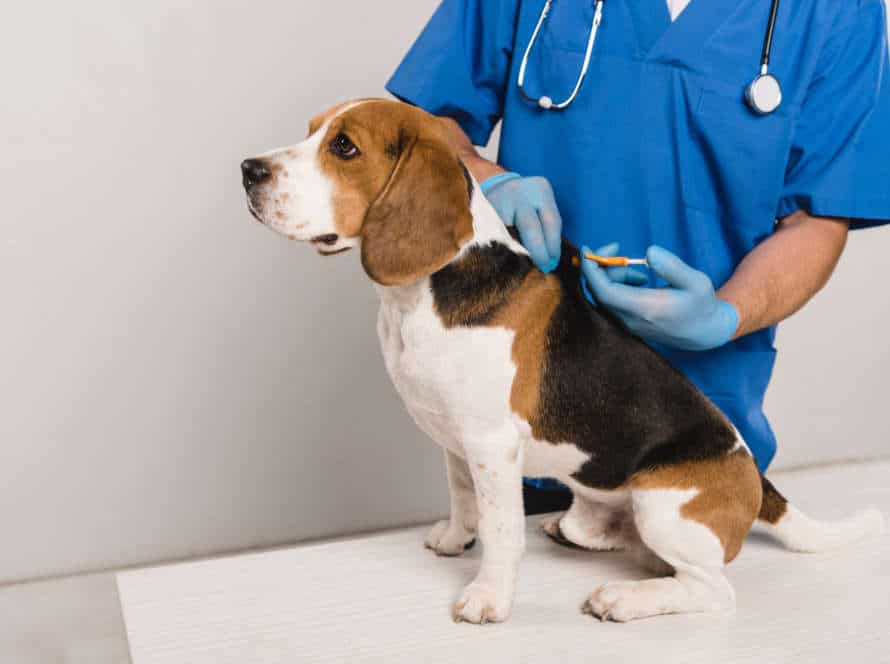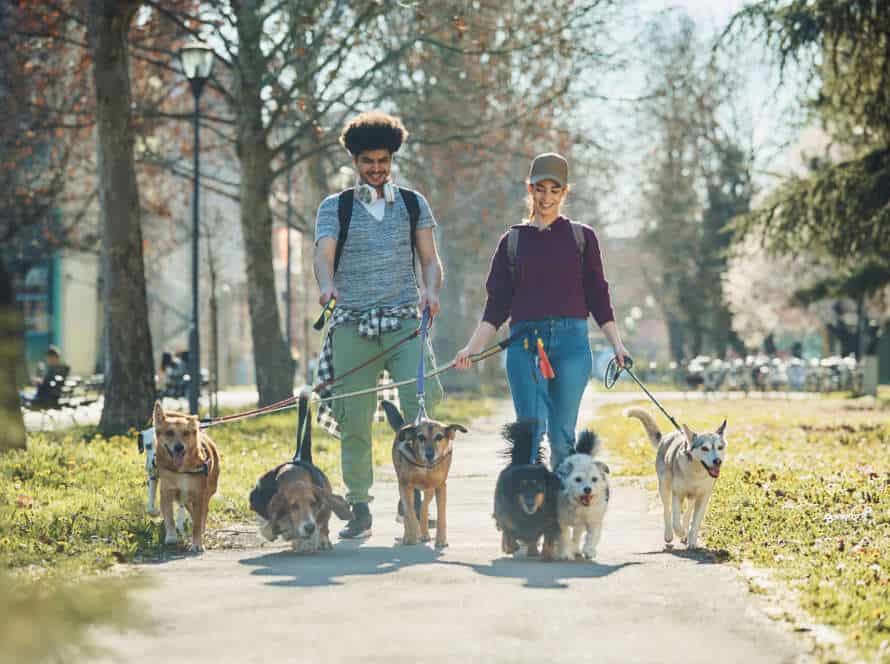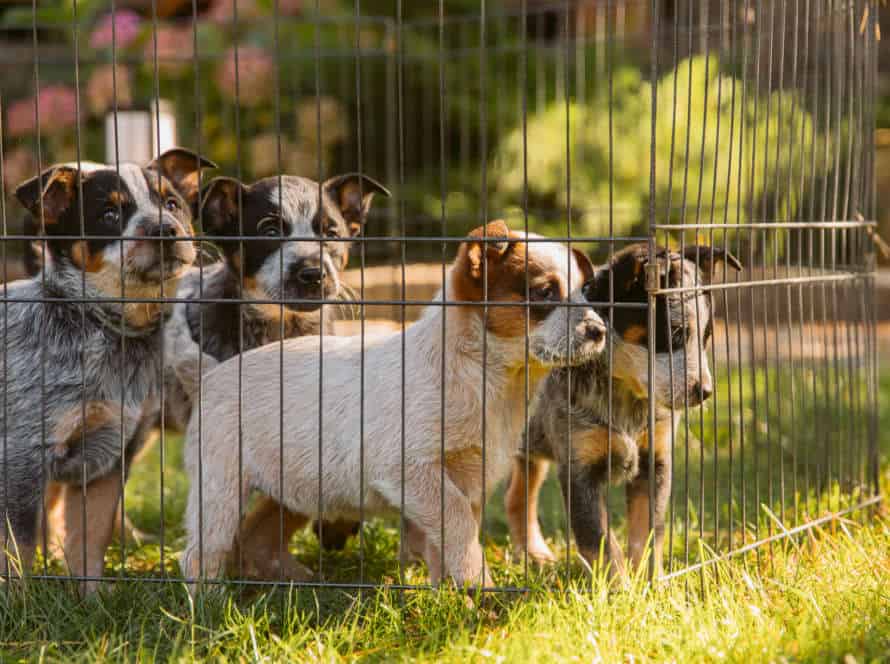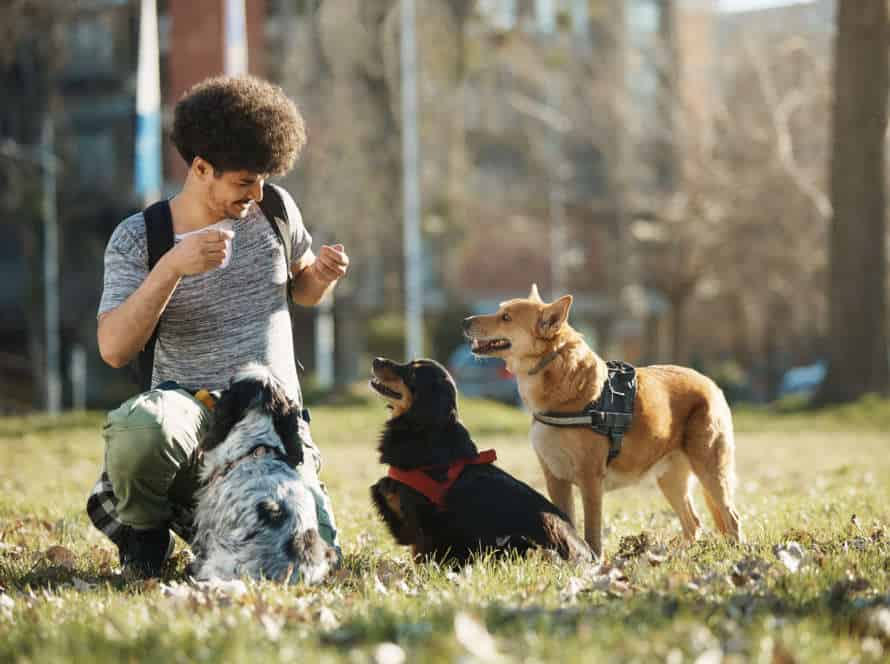Low-Energy Dogs: Maximizing Mental Stimulation
Low-energy dogs need mental stimulation. Here are some good ways to give it to them:
- Puzzle toys! Get some that make your pup ‘work’ for treats or kibble. It’ll help with problem-solving and make mealtime more exciting.
- Hide-and-seek! Hide treats around the house and let your pup use their nose to find them.
- Training exercises! Teach them new tricks and commands. This will help them stay sharp, plus strengthen the bond between you two.
- Interactive toys! Get some tug ropes or balls. Play with your pup to give them physical and mental stimulation.
Understanding Low-Energy Dogs
Low-energy dogs need mental stimulation and exercise, just like any other pup. But, regular walks and playtime may not provide them with enough stimulation. To best meet their needs, it is important to understand their individual characteristics. Let us explore how to maximize the mental stimulation of these doggos!
Identifying if your dog has low energy levels
Identifying your dog’s energy levels? Check their behavior and activity. Low energy dogs are sleepy and less engaged. They may have a slow gait, longer naps, and less interest in exercise or play. They can have difficulty focusing and short attention spans. To check their energy levels, observe daily routines, look for changes in behavior, and monitor signs of lethargy. Mental stimulation helps low-energy dogs stay engaged. Puzzles, scent games, and training exercises are good ideas. Pro tip – Diet and exercise can boost energy, but talk to your vet before starting a new diet or activity.
Common breeds of low-energy dogs
Low-energy dogs are great for those with less active lifestyles. They are known for their peaceful temperaments, minimal exercise needs, and low levels of energy. Here are some typical breeds of low-energy dogs:
- Bulldogs – They are amiable, loving, and prefer to relax inside. Little exercise is needed, making them ideal apartment dogs.
- Basset Hounds – These have a low-key temperament, perfect for hectic households. Walks are necessary to keep their weight but not much exercise.
- Greyhounds – Despite their speediness, these are some of the laziest dogs around. After a run, they love to snooze for the rest of the day.
- Bullmastiffs – These are gentle giants, making them great for families with children. They can live in apartments and need a good walk daily.
- Pugs – These small breeds have huge personalities! They are great companions and their low energy means they are perfect apartment dogs. Exercise is still needed to stay healthy.
It’s essential to give low-energy dogs mental stimulation. Puzzles, brain games, and obedience training will help them stay mentally fit. Pro tip – Make sure you can match your lifestyle to the activity level of your pup, and never leave them bored!
Understanding the importance of mental stimulation for low-energy dogs
Low-energy doggos may not be keen on physical exercise, but mental stimulation is key for their overall health. It has many benefits too! Such as:
- Less boredom, anxiety and destructive behavior.
- Better cognitive function and memory.
- A stronger bond with you.
To maximize your pup’s mental stimulation, try:
- Puzzle toys that require problem-solving and thinking.
- Training exercises that introduce new commands and behaviors.
- Enrichment activities that stimulate your pup’s sense of smell and curiosity.
Even if physical exercise isn’t your low-energy pup’s cup of tea, mental stimulation can keep them happy, healthy, and engaged.
Ways to Maximize Mental Stimulation for Low-Energy Dogs
Exercise is essential for canine physical health. But we often forget about mental stimulation! Low-energy pup’s key to joy? Stimulating activities. Let’s discover the best ways to maximize mental stimulation for these pooches!
Incorporate scent work and nose games
Maximizing mental stimulation for low-energy dogs can be fun and effective with scent work and nose games. Here are a few ideas:
- Scent Work: Hide a treat or toy. Start with easy hiding spots, then make it harder.
- Snuffle Mats: Mats of fleece strips are great for nose games. Hide food/treats in it and let your pup find the rewards.
- Muffin Tin Game: Place treats in a muffin tin and cover with tennis balls. Encourage your dog to use their nose to move the balls and find the treats.
These games will keep your pup entertained for hours and are great for mental stimulation.
Introduce puzzle feeders and interactive toys
Introducing puzzle feeders and interactive toys are great for providing mental stimulation for low-energy dogs. They keep your pup engaged without needing too much energy. Here’s how to get the most out of it:
- Puzzle Feeders: These toys make mealtime more fun. Your dog has to solve a puzzle to access their food.
- Interactive Toys: Get various shapes and sizes that have treats inside. Problem-solving skills improve and boredom is relieved.
- Regular Walks: Even low-energy dogs need fresh air and exploration. Short walks are still useful and stimulate their senses.
- Training Sessions: Mental stimulation comes with a few minutes of training. Plus, it strengthens the bond between you and your dog.
Add variety to your dog’s daily life. Low-energy doesn’t mean low-maintenance.
Pro Tip: If your dog doesn’t like puzzle feeders, try hiding treats around the house or yard and let them use their nose to find them. It’s a fun and mentally stimulating game!
Teach new tricks and commands
Teaching your pup some new tricks and commands is a great way to keep their brains active and engaged. Here are some tips to make the process easier:
- Start with basic commands like ‘sit’ and ‘stay’.
- Reward with treats and praises when they do it right.
- Break complex tricks into small steps.
- Use the same verbal and hand signals for each command or trick.
- Keep training sessions short and frequent.
- Be patient and persistent, as each dog learns at their own pace.
Pro tip: Puzzle games and interactive toys are a great way to add an extra challenge to their routine. Not only will this mental stimulation help your pup, but it’ll strengthen your bond too!
Daily Routine for Low-Energy Dogs
Be a responsible pet owner and find ways to keep low-energy dogs active! For their happiness, health, and good behaviour, a consistent daily routine matters. Let’s see what a good routine for these dogs could look like. Physical and mental stimulation are key.
Structuring regular exercise into the daily routine
Structuring exercise into the daily routine of low-energy dogs can be difficult, but it brings many benefits. Incorporating a routine and daily exercise leads to healthier, more active, and happier dogs, mentally and physically.
To maximize mental stimulation in low-energy dogs:
- Use interactive feeding toys to dispense food or treats.
- Incorporate brain games and basic training exercises. Short, fun sessions teach your pup and reward successes.
- Regular walks burn energy, reduce stress, and prevent boredom.
- Play interactive games like fetch or tug-of-war to bond and encourage mental and physical stimulation.
Plan indoor activities during bad weather
When the weather is bad, it can be hard to keep your low-energy pup active. But, planning fun things to do indoors can boost their mood and give ’em mental stimulation. Here are some ideas:
- Puzzle games – Hide a toy or treat and give clues for your pup to find it.
- Obstacle course – Make an indoor course with chairs, pillows, and other things.
- Training – Teach your pup new tricks or practice obedience.
- Cuddle time – Low-energy pups like a comfy spot to rest, so snuggle up together.
- Pro tip – Mental exercise can be just as tiring as physical activity for low-energy dogs. Plan a balance of both to keep them happy and healthy.
Quality time spending with your dog: snuggling, grooming, and bonding activities
Quality time with your pup is a must for strengthening the bond and promoting their health and joy. Cuddles, pampering, and fun activities are great ways to bond with your fur baby.
- Cuddles: Dogs love nothing more than snuggling up with their humans. On the couch or in bed, cuddling is a great way to relax and unwind.
- Pampering: Brushing their coat, giving them a bath, or trimming their nails helps keep them looking and feeling their best. Plus, it’s a wonderful way to bond.
- Bonding Activities: Playing catch or tug-of-war, taking a stroll, and obedience training all help keep your pup mentally engaged and create a closer bond.
Pro Tip: Always be aware of your dog’s boundaries and shower them with love and affection during your time together.
Understanding the Limits to Low-Energy Dogs
Low-energy dogs might not need as much physical activity as other breeds. But, they still need mental stimulation to stay happy and healthy. It’s essential to understand the limits of a low-energy dog for providing the right amount of activity and stimulation. So, we’ll look at some methods of giving them the best mental stimulation, whilst still being aware of the limits.
Recognizing limitations on activities that require high energy levels
Low-energy dogs have less stamina and need less physical activity than other high-energy breeds. Knowing their limitations is important to keep them healthy and happy.
Here are some:
- Exercise: Walks and leisure play in a fenced yard are better for these dogs.
- Outdoor activities: Hot and humid weather can zap their energy. Plan outside activities when it’s cooler.
- Training: Long training sessions with lots of stimulation won’t work for them. Use 5-10 minute sessions instead.
Modifying activities to match your dog’s energy level
Revamping activities to fit your pup’s energy level is critical to make sure they get the right amount of exercise and mental stimulation. Knowing the extent of low-energy dogs is key to developing an enjoyable regimen for both you and your pup that maximizes their mental activity.
Here are some hints to adjust your activities with your low-energy dog:
- Short, regular walks instead of one long one.
- Play games that bring out their natural instincts, e.g. hide and seek or puzzle toys.
- Teach your pup new tricks or obedience drills to give mental stimulation.
- Provide toys meant to be chewed or that dispense treats to keep them involved.
Remember that every dog has different energy levels, and it’s essential to customize activities to their needs to keep them healthy and contented.
How to maintain a good balance for your low-energy dog’s physical and mental health
Ensuring a healthy and content life for your furry pal who is low on energy is essential. Even if they don’t need as much physical exercise as higher-energy dogs, their mental stimulation is just as important. Here are some tips to give your pup the perfect balance:
- Provide regular physical activity, like walking or swimming.
- Stimulate their mind through training, puzzles, and interactive toys.
- Establish a routine that works for your pooch, and don’t overwork or overstimulate, which can cause stress and fatigue.
Remember, every dog is special and requires customised care. By focusing on their physical and mental needs, you can make sure your low-energy pup is always happy and healthy.
Frequently Asked Questions
Q: What are low-energy dogs?
A: Low-energy dogs are breeds that have a tendency to be less active and require lower levels of physical exercise compared to higher energy breeds.
Q: How can I maximize mental stimulation for my low-energy dog?
A: There are several ways to provide mental stimulation for low-energy dogs, including interactive toys, puzzle feeders, obedience training, and scent work.
Q: Why is mental stimulation important for low-energy dogs?
A: Mental stimulation is important for all dogs, regardless of their energy levels. It helps to prevent boredom, reduce anxiety, and promote overall mental and cognitive health.
Q: Can low-energy dogs participate in agility training?
A: Yes, low-energy dogs can participate in agility training, but it may require slow and modified training to suit their lower activity levels.
Q: What are some low-impact exercises for low-energy dogs?
A: Some low-impact exercises for low-energy dogs include short walks, swimming, and gentle stretching exercises.
Q: Is it necessary to provide physical exercise for low-energy dogs?
A: While low-energy dogs may not require as much physical exercise compared to higher energy breeds, providing regular physical activity is still important to maintain their overall health and prevent obesity.

